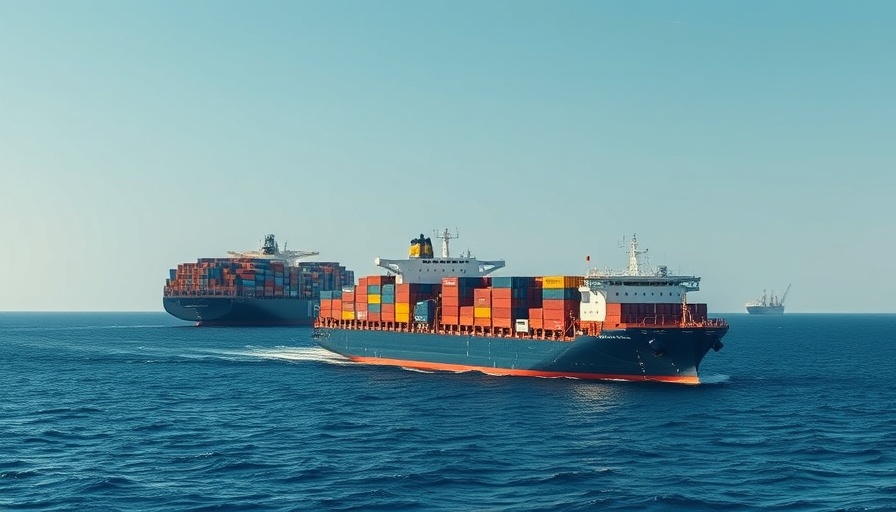
The Implications of Trump's 25% Tariffs on Mexico and Canada
President Donald Trump has stated that 25% tariffs on imports from Mexico and Canada will take effect, a move that sends ripple effects through markets and industries as anxiety over a potential trade war grows. This decision, which signifies a pivotal moment in North American trade relations, has already had immediate repercussions: the S&P 500 index saw a significant drop of 2% in reaction to the announcement, highlighting the palpable tension surrounding these new tariffs.
Understanding the Motivation Behind Tariffs
In framing his justification for the tariffs, Trump has linked them not only to economic issues but also to national security concerns, suggesting they will combat fentanyl trafficking and illegal immigration, while simultaneously addressing trade imbalances and incentivizing U.S. manufacturing. By imposing these tariffs, Trump aims to compel Mexico and Canada to enhance their enforcement against drug trafficking and illegal immigration.
The Financial Impact on Businesses and Consumers
The imposition of these tariffs is anticipated to escalate costs across numerous sectors. Many companies, including major players like Ford and Walmart, voiced concerns that the tariffs may result in heightened prices for consumers, potentially disrupting supply chains and operations. Various economic analyses indicate that average households could see increased expenses upwards of $1,000 due to the tariffs and ensuing inflationary pressures.
Global Reaction and the Prospect of Retaliation
Global markets reacted swiftly to the tariff announcement, with Canadian and Mexican officials expressing readiness to implement countermeasures against the U.S. tariffs. Canada’s Foreign Minister Mélanie Joly highlighted her country's preparedness with $155 billion in tariffs ready to go. This readiness illustrates the fraught nature of current U.S.-Canada-Mexico relations, with the prospect of retaliatory tariffs looming large over all parties involved.
The Analysis of Economic Risks
Economists widely acknowledge the risks associated with Trump's tariff strategies; many are concerned that they will exacerbate current inflation and stifle growth. Historical data supports claims that higher tariffs generally lead to elevated prices and reduced economic output. For example, studies show the economic impacts of the Trump administration's tariffs have led to a long-term GDP reduction of 0.2% and potential job losses in affected sectors.
Long-Term Economic Projections
Looking to the future, the looming question is how these tariffs will affect U.S. economic policy and trade relationships down the line. With global consumers and markets bracing for the duration of these tariffs, the overall sentiment indicates a significant economic reset. Investors and market strategists must plan for a trade landscape that may increasingly become adversarial, potentially altering company strategies regarding supply chains and market entry.
Conclusion: Prepare for Uncertainty
As the situation unfolds, executives and decision-makers in mid-to-large-sized companies must remain vigilant and adaptable to shifts in trade policy and tariffs. Developing proactive strategies for managing increased costs and potential supply chain disruptions will be critical for business continuity. Understanding the economic implications of these policies can aid in crafting responses to protect your business and leverage opportunities amid uncertainty.
 Add Row
Add Row  Add
Add 




Write A Comment